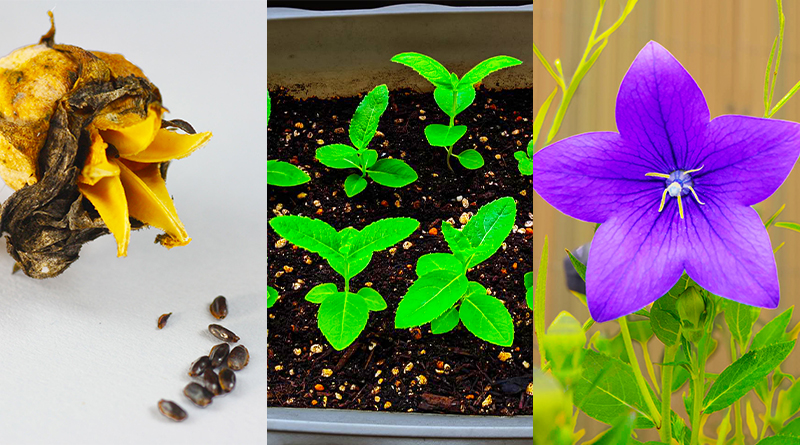Easy Method of Growing or Propagating Balloon Flowers
Balloon flowers are clump-forming perennials and members of the easy-to-grow bellflower family of plants. Balloon flowers get their name from their buds, which look like little hot air balloons before they open into star-shaped flowers of blue, pink or white. The inflated buds of balloon flower are fun to pop, and they make excellent cut flowers. Learn on to the growing method of this flower.
Gardeners or balloon flower lovers can grow their balloon flower plants in two best ways.
Grow Balloon Flowers from Seed
- Start seeds indoors in the early spring about six to eight weeks before your area’s projected last frost date.
- Dig the soil into your garden bed in an area that receives full sun to part sun. Sprinkle the seeds on garden bed.
- You can grow the plant in pot. Cover the seeds with 1/16 inch of seed starter mix or ordinary potting soil.
- Place the pot in a warm, bright location until the seeds germinate.
- Water the seeds and keep the soil moist until they germinate, which will take about two weeks. Keep the soil moist as the seedlings grow.
- If starting seeds indoors, sow them six to eight weeks before the last spring frost and transplant them when the weather warms.
Grow Balloon Flowers from Cuttings
- Take a sharp knife to trim a 4-inch stem length and remove the foliage from the bottom half of the cuttings.
- Dip the bottom end of the cuttings in rooting hormone and plant them in individual pots filled with a sterile planting mix or seed-starting medium.
- Cover each pot and plant with a clear plastic bag, and place the pots in a bright light location. Keep the soil moist.
- New leaf growth indicates the cuttings have rooted. Transplant the rooted plants to the garden, being careful not to disturb the roots.
48 total views, 1 views today




